Pave Your Way to Poker Awesomeness: Understand the Essential Rules and Tactics
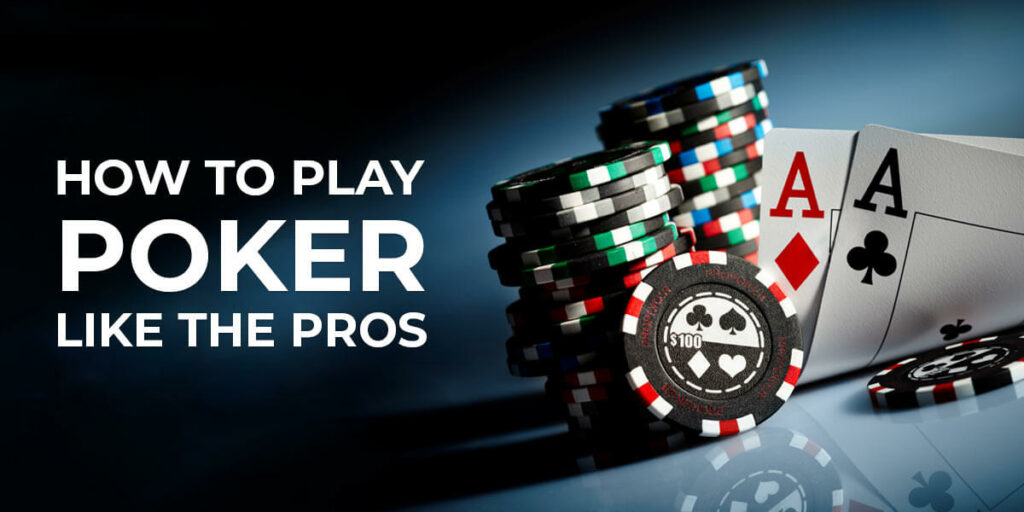
Eager to enhance your poker abilities and achieve professional status? Begin by grasping the fundamentals of rules and tactics. Our in-depth guide equips you with vital tools for success at the poker table.
- Learn the basics of the game
- Understand the game theory and math
- Develop an advanced poker strategy
- Keep track of your progress
- Boost your proficiency by reviewing professional poker game footage
- Know the poker jargon
Learn the basics of the game
Getting familiar with basic poker rules is your foundational step. It's crucial to prioritize these essentials before aiming to play like a professional.
Poker Hand Rankings
- High Card – In cases of a tie, the player with the highest individual card prevails
- Pair – two cards of matching rank
- Two Pairs – When a hand contains two distinct pairs of equally ranked cards
- Three of a Kind – Holding three cards with identical ranking
- Straight – A sequence of five cards in consecutive order but not of the same suit
- Flush – A collection of five cards all from the same suit, regardless of order
- Full House – A hand containing one pair and a separate three of a kind
- Four of a Kind – Holding four cards with the same rank
- Straight Flush – A consecutive sequence of five cards, all of the same suit
- Royal Flush – The highest form of Straight Flush with cards ranking from 10 to Ace
Hand Ranking Rule
Keep in mind, when two players share a similar hand, the one with the superior ranked cards wins.
For instance, holding a pair of 10s outdoes an opponent's pair of 3s because yours are higher-valued.
If players have hands containing identical ranks, a tie occurs, leading to an even pot distribution among them.
How to Play Poker Hands
Playing Texas Hold'em starts with placing an ante bet, which is usually a minor amount like $1 or $5 required to enter a round.
The poker game moves clockwise from the dealer position. To the dealer's left sit two mandatory bets, known as the small blind and big blind.

The Blinds
The big blind's size is double that of the small blind, representing the minimum required wager at the table, with values set by the table stakes. Once active, players receive two 'hole cards' each, commencing from the small blind. This marks the start of the initial betting phase, termed pre-flop.
Pre-Flop
The decision-making process begins: should players continue with their hand or not? Since the blinds represent committed bets, the first action falls to the player left of the big blind, often referred to as under the gun.
Desiring to play a hand means matching the prior bet or raising it by a minimum of double the previous amount.
Completion of all bets signifies the end of the pre-flop round.
The Flop
Following this, the dealer reveals 'the flop,' presenting three community cards usable by all.
It's time to strategize on the best possible hand, considering that two additional cards are yet to be shown.
With the flop unveiled, the post-flop betting phase begins with the first player on the dealer's left continuing the action.
Three Possible Decisions
- Check – Passing the chance to take an action transmits it to the succeeding player
- Raise – Adding an amount no smaller than the value of the big blind to the current bet pool, potentially going 'all-in'
- Fold – Withdrawing from the current play round, generally not advisable if you're holding the superior position
Players unwilling to match (call) or increase (raise) the current bet will need to 'fold,' effectively losing their stake in this round. The last remaining player standing will win if others fold aside.
The Turn
As betting concludes, the dealer introduces the 'turn' card, maintaining similar betting actions as earlier rounds.
The River
The final card delivered by the dealer is the 'river,' prompting the closing round of wagers, known as ‘the showdown,’ where revealed hands settle the game outcome, beginning with the last player who made an aggressive move.
Crafting the best possible five-card combination from seven available cards (five communal and two in-hand) is your ultimate goal. Sometimes utilizing just one from your hand and four from the table suffices for victory.
Understand the game theory and math
The essence of honing 'Game Theory Optimal' (GTO) Poker lies in achieving professional-level play.
Utilizing GTO intends to render your play style almost impervious to exploitation, serving as a key component in excelling as a poker player.
Is GTO Enough?
While mastering GTO is pivotal in reaching professional heights, strategic deviations are advised to exploit opponents effectively.
Though primarily defensive, combining GTO with exploitative tactics maximizes potential profit. Even if these concepts favor pros, beginners can vastly benefit by incorporating them for better poker rankings.
A strategic harmony entre defensive and offensive methods forms the blueprint of playing poker skillfully.
Calculating Pot Odds
Pot odds signify the proportional relationship between pot size and active bets.
For example, if a pot holds $1000 and another $1000 is bet, resulting in a $2000 total, calling for a $1000 offers 2:1 odds.
Pot Odds and Risk-Reward Rates
These percentages are crucial, governing risks versus rewards, thus dictating how broadly players can engage in a given scenario.
When encountering high pot odds, adopting an expansive play range is advantageous. Conversely, low pot odds command a restrained approach. Understanding how to manipulate pot odds is vital for professional play.
Grasp Poker Skillfully by Leveraging Hit Percentages
Estimating hit percentages involves multiplying your 'outs' during the flop by four, or by two during the turn.
Imagine holding two diamonds initially, with another pair on the flop. This grants nine outs, fueling an 18% chance to hit on the turn or a 36% chance by the river.
Pairing such estimations with pot odds aids decision-making on whether to pursue a draw, helping ascertain a player's skill level.
Implied Odds
Implied odds explore potential future gains, considering possible chips won in subsequent rounds.
While your immediate pot odds might not validate calling a draw on the flop, calculating prospective wins on later bets can justify pursuing a potentially fruitful call.
How to Play Poker Like a Pro Example
An opponent's bet of 10 big blinds into a 20 big blind pot enlarges it to 30 big blinds, necessitating a call of 10. Despite not meeting ideal 4.22:1 pot odds, 3:1 odds offer worthwhile exploration due to possible winnings if the draw hits.
Internalizing the folding percentage formula bolsters competent play. Practice its widespread application to sharpen professional poker skills.
Consider adjusting strategies based on intuition and strength of your hand rather than solely adhering to preset formulas.
Folding Frequency Formula
Bet / (Pot + Bet) = Folding Frequency
For an in-depth study of poker mathematics and GTO strategies,
Boletin de Matematicas demonstrates the importance of math as a pivotal factor in winning.
Further Insight
In essence, GTO poker establishes fundamental concepts on which more nuanced strategies can be developed, avoiding the trap of predictability, and laying the groundwork for professional-level poker. this scientific paper A sophisticated, thoughtfully developed poker strategy is the hallmark of players performing well in major tournaments.
Consistently triumphing in poker demands dedication and effort. Reluctance to invest time and energy will hinder your success.
Develop an advanced poker strategy
Your preliminary decision should align your play style preference. Consider these play styles:
Aggressive – Frequently bet, open pots, and put pressure on opponents.

Strategy Choice
Passive – Opt for calling, allowing opponents to dictate the betting landscape.
- Loose – Play a wider range, taking risks, and urging others to fold.
- Tight – Favor a cautious approach, folding regularly, and minimizing risks.
- Settling on an initial strategy is crucial for professional poker play. Yet, versatility remains indispensable. Static play converts moves into predictability.
- Understand Poker Positional Advantages
Positional advantage governs the sequence of play actions. Acting last provides positional benefit, whereas leading incurs drawbacks, known as being 'out of position'.
Since poker is driven by incomplete information, positional play dictates strategic decisions at the professional level.
Consistently acting after your opponent furnishes better decision-making opportunities by allowing more informed judgments.
An Introductory Guide to Mastering Poker with Professional Skills
Start transforming into a poker expert! Embark on your poker journey guided by our expertise and suggestions to become a professional today!
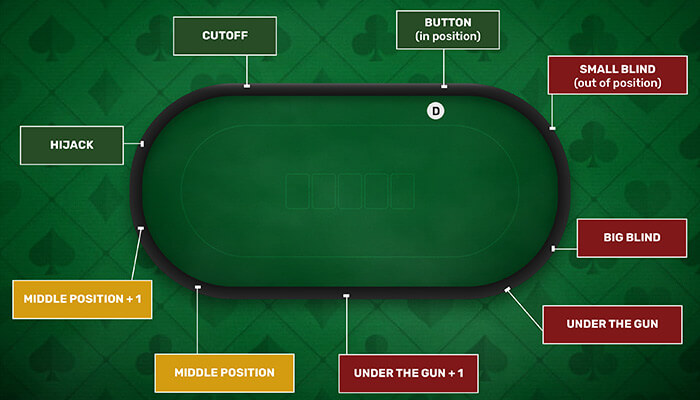
Gather Additional Information
Aspire to Be a Poker Expert: Master the Game's Rules and Tactics
Master Poker Like the Pros: Essential Guidelines, Techniques, and Tips
Want to elevate your poker skills and aim for professional status? Begin your quest by thoroughly understanding the rules and tactics. Our detailed guide equips you with the tools necessary for victory at the table.
Enhance your abilities by observing professional game recordings
Understanding the foundational rules is crucial as your initial step towards learning poker. Keep in mind that grasping the basics is vital before attempting to play at a professional level.
High Card – in the event of a draw, the player with the highest-ranking card prevails.
How Position Plays Into It All
Two Pairs – having two separate pairs with identical ranks
Three of a Kind – three identical-rank cards
Use Ranges and Broad Textures
Straight – five consecutive, unsuited cards
Flush – any five cards of the same suit
Full House – a combination of one pair and a three of a kind
Four of a Kind – four cards with the same rank
Straight Flush – a series of five consecutive cards all in the same suit
How to Use Ranges
Royal Flush – A Straight Flush exclusively from 10 through Ace
Keep in mind that if two contenders hold equivalent hands, the one with higher cards secures the win.
Ranges Become More Complex
For instance, if you're holding a pair of 10s while your opponent has a pair of 3s, your higher pair ensures you the victory.
However, with two hands of the same ranking, the outcome results in a tie, dividing the pot equally.
Texas Hold 'em begins with players placing a small entry fee, known as the ante, generally a modest sum such as $1 or $5.
In poker, players proceed clockwise starting with the dealer. To the immediate left of the dealer, two forced bets, termed the small blind and big blind, initiate the proceedings.
The big blind doubles the small blind's worth and establishes the minimum table bet. After the blinds are in place, each player receives two cards, starting from the small blind position, leading to their personal 'hole cards' and triggering the 'pre-flop' betting phase.
Keep Them Guessing
Players must now decide if they want to participate further, with the action starting from the player to the left of the big blind, in the 'under the gun' position.
Range Versus Range Equity
Should a player opt to continue, they need to match or raise the previous bet, ensuring it's at least double in size.
Betting concludes the pre-flop round.
Tendencies
Next, the dealer showcases three community cards termed the flop. Players combine these with their hole cards to strategize.
This marks the beginning of planning your potential winning hand with two more community cards still unrevealed.
Range Adjustments
The betting round post-flop involves the dealer's left-hand player starting the sequence.
Check – allows the next player to take action in sequence without betting
Adjustments Depend on Your Opponents
Raise – increase the bet pool by at least the big blind amount, or go 'all-in'
Fold – withdraw from current play, an inadvisable strategy when holding a strong position
Button Player Range Table
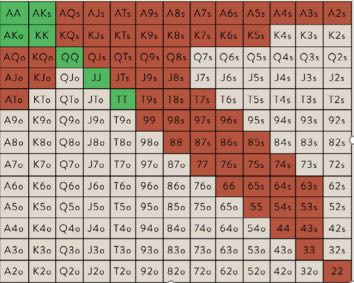
If unwilling to match or exceed the bet, players must fold, allowing the remaining player standing to claim the round.
Bluff When It Makes Sense
With bets in place, the dealer displays a fourth card, known as the 'turn', proceeding with similar betting reactions.
The last revealed card in this sequence is the 'river', leading to the ultimate round called the showdown where players disclose hands.
Aim to craft the premier five-card hand possible using any combination of seven available cards, even if it means only utilizing one of your personal cards.
Game Theory Optimal (GTO) Poker is seen as fundamental for professional poker strategy.
Its primary objective is making players effectively unexploitable by adversaries, defending against disadvantages in play style.
Excelling in GTO delivers professional stature, though it encourages strategic deviations to leverage opponent weaknesses.
Don’t Go All-In Yet
While GTO emphasizes a defensive play strategy, merging it with exploitative tactics maximizes profit outcomes, vital for both seasoned and new players aiming to improve.
Achieving a blend of defensive and aggressive moves encapsulates the essence of playing poker professionally.gambling sites , we suggest you download a free play version of poke Pot odds are the comparison between the pot's current size and your betting requirements.
Keep track of your progress
Situation example: With a $1000 pot and a $1000 bet, the pot turns $2000, with required $1000 call, equating to a 2:1 ratio or 33% probability.top-rated online casinos .
Use Data Software
This percentage impacts decisions, controlling the breadth of one's strategic play range.
High pot odds suggest broader hand continuation, whereas low odds necessitate tighter play. Effective handling of pot odds aligns with professional poker standards.
Equilab Understand Poker with Hit Likelihoods
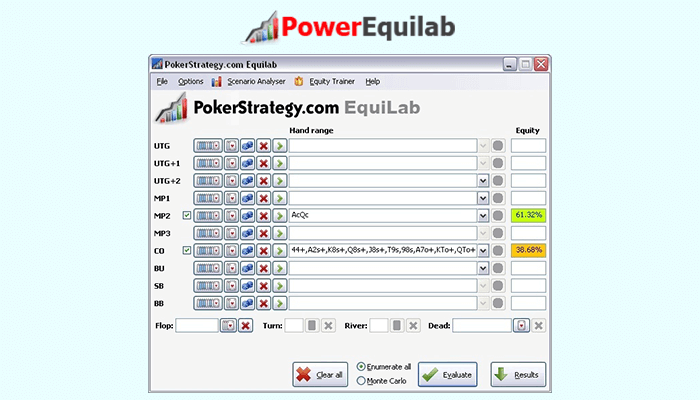
Draw odds can be estimated by multiplying your outs by four at the flop, by two on the turn.
For instance, two in-hand and two on-flop diamonds give you 9 outs, resulting in an 18% turn or 36% river probability.
Boost your proficiency by reviewing professional poker game footage
This method, combined with pot odds, helps decide the merit of pursuing draws, a skill vital for advanced poker gameplay.
Implied odds include potential pot gains from subsequent rounds.
Twitch and Youtube Material
Though initial flop call odds may appear insufficient, possible turn/river returns justify continued investment in some cases.
As an example: An opponent's 10 big blind bet in a 20 blind pot leads to a now 30 big blind total, requiring a 10 blind call.
Some Examples
For example, a place to learn the Run It Up 24/7 Twitch stream A flush draw at 3:1 is lesser than the ideal call need of 4.22:1, yet implied future profit legitimizes the choice despite standalone unprofitability. PokerStars YouTube channel The fold indicator percentage revealed by this formula should be memorized and applied judiciously.
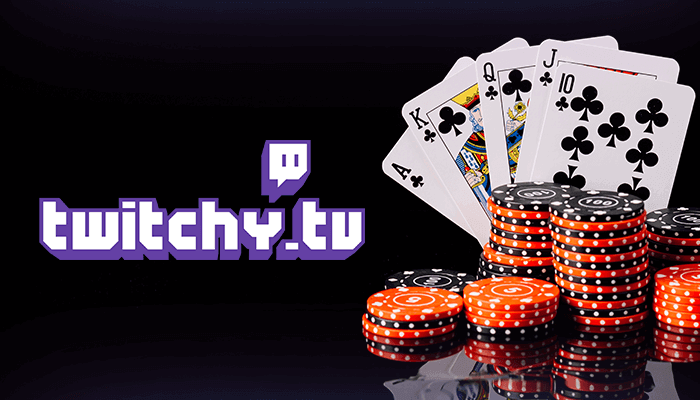
Poker Theory Books
Nonetheless, interpretation and intuitive adjustments based on hand strength may override formulaic results.the best Hold’em poker books for new and seasoned players.
Seek in-depth mathematical comprehension and GTO insight in poker.
Know the poker jargon
From Boletin de Matematicas, mathematical application in poker solidifies a winning base.
Key Terms
- Action
Fundamentals of GTO poker establish a frame for formulating complex strategies beyond mere predictability.
In-depth strategic thinking distinguishes top-tier tournament performers.
- Bad Beat
Consistent poker triumph rests on dedicated progress. Lack of effort guarantees stagnation.
Determine your comfort with a particular gameplay approach by selecting a preferred style:
- Bluff
Aggressive – frequent betting, initiates pots, applies pressure;
- Button
Passive – favors calling, allowing opponent control over betting actions;
- Buy
Loose – gambles on hands, pushing others to fold or chasing luck;
Tight – emphasizes prudence, frequent folds, risk aversion.
- Check-Raise
Deciding on an initial poker playstyle is critical. However, retaining adaptability is paramount to avoid becoming foreseeable.
Discover Advantages of Poker Position Play
- Community Cards
A player's position affects action order. Acting last, or 'in position,' provides strategic adaptation benefits.
- Dealer
Poker being a game of incomplete information, your strategic position defines your professional advancement chances.
When opponents act earlier, you gather essential information for improved decision-making.
A Newcomer's Handbook for Mastering Poker at a Professional Level
- Hole Cards
Aspire to become a seasoned poker player! Embark on your adventure with our insightful tips and guidelines for achieving professional status in poker today!
- Kicker
Rise as the Next Poker Expert: Understand the Fundamentals and Techniques
Mastering Poker Like the Experts – Essential Rules, Tactics, and Guidance
- No Limit
Eager to enhance your poker skills and emerge as the next champion? Begin by learning the crucial rules and key strategies. Dive into our extensive guide designed to equip you with the knowledge needed for success at the table.
- Outs
Enhance your gameplay by analyzing replays of professional matches
Familiarize yourself with the basic rules as an initial step towards becoming proficient in poker. Remember, mastering the fundamentals is crucial before progressing to advanced strategies used by professionals.
- Rainbow
High Card – in cases of tie, the highest card determines the winner
- Rank
Two Pairs – a hand featuring two pairs of cards with identical values.
- River
Three of a Kind – consists of three cards all sharing the same value
- Showdown
Straight – a sequential arrangement of five cards that are not all from the same suit
Flush – consists of five cards from the same suit, regardless of their order
- Suited
Full House – a hand made up of a pair and a separate three of a kind
- Gather Additional Information
Four of a Kind – four cards all holding the same value
- How Position Plays Into It All
Straight Flush – a sequence of five suited cards in order
Use Ranges and Broad Textures
Royal Flush – a top-ranked Straight Flush that includes cards ranging from 10 to Ace
- How to Use Ranges
Take note that if two players possess identical hands, the participant with the highest-ranking cards prevails.
Ranges Become More Complex
For instance, if you are dealt a pair of 10s versus your opponent's pair of 3s, your hand is superior, granting you victory.
If the hand values are equivalent, the round results in a tie, and the pot is equally divided among the players. Keep Them Guessing .
In Texas Hold 'em, your initial action is to place an ante, which is essentially the opening bet for the round. Typically, this is a modest wager, possibly $1 or $5.
The poker match progresses in a clockwise manner with the dealer. Positioned directly to the dealer's left are two initial forced bets referred to as the small blind and big blind.
Range Versus Range EquityTendencies Range Adjustments
Adjustments Depend on Your Opponents
- The big blind holds twice the value of the small blind and represents the least bet allowable at the table. Once these blinds are set, cards are distributed to the players starting from the small blind. The initial two cards you receive are known as 'hole cards', and once dealt, the first betting phase, called the pre-flop, commences.
- Players are now faced with the decision of whether to partake in the hand. As the small and big blinds have already contributed to the pot, the action begins with the player to the immediate left of the big blind, a role known as 'under the gun'.
- Button Player Range Table
- Should a participant wish to remain in the game, they must either match the previous total or increase the bet, with the minimum raise being twice the original amount.